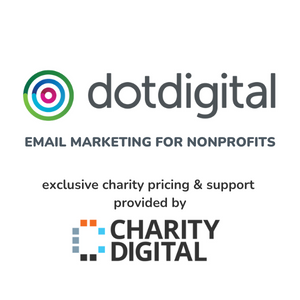Insights
INSIGHTS
All Topics
My Account
The ultimate guide to digital marketing
15 Aug 2024by Ioan Marc Jones
We look at how to master digital marketing, with advice on building brilliant websites, creating engaging content, smashing social media, mastering the art of effective SEO, perfecting email marketing, and so much more
Marketing is a broad and all-encompassing term. It refers to any action an organisation takes to attract an audience to your product or services. It is the act of promotion, raising awareness, strengthening loyalty to your cause, and demonstrating the value of your services.
Marketing is something that every organisation, regardless of shape and size, depends upon. Perhaps you post some fun and informative facts on social media. Perhaps you changed the title of your latest email header. Perhaps you’re throwing a meet and greet event. All of that constitutes marketing.
The benefits of effective digital marketing are huge. But organisations need to embrace the right digital marketing channels, rather than attempting to do everything. And you need to use the selected channels effectively.
In this article, we run through the popular channels that you can use for digital marketing, explain the basics of each, and offer simple advice to help you master every channel. Let’s begin with the benefits of digital marketing.
Skip to: Explore the benefits of digital marketing
Skip to: Define marketing goals
Skip to: Produce engaging content
Skip to: Use the right social media platforms
Skip to: Use email marketing to boost digital marketing
Explore the benefits of digital marketing
The benefits of digital marketing are clear. We run through some of the biggest benefits, many of which are interdependent. Let’s start with the most obvious one: awareness.
Marketing boosts awareness
Marketing is how you stand out. Your organisation is a brand, whether you think about it as such or not, and you will need to raise the profile of your brand. An effective marketing campaign can raise the profile of your brand from unknown to popular, almost overnight. That is perhaps the greatest benefit for organisations, as it can lead to myriad knock-on benefits: more funds, more volunteers, and more service users.
Marketing raises funds
Marketing lets you get in front of fresh eyes, perhaps people you would not easily consider as your target audience. With raised awareness comes more people visiting your site, more people looking your organisation up online, and more people engaging. That will translate into additional donations.
Each of those fresh eyes is a potential donor opportunity. Effective marketing gives you the chance to showcase the issues that you are confronting, the work you do in the community, and, most importantly, the work you could do with a little more support.
Marketing increases volunteers
According to the latest NCVO Almanac, in 2020-21, 16.3m people in the UK volunteered ‘formally’ – that is, through a voluntary organisation of some kind. The same report found that half of UK adults volunteered time to help others at least once in the previous year – a trend that is likely to continue.
Volunteering is growing and more and more people are finding ways to help online. A successful marketing campaign can not only attract donors but can also bring in volunteers. And, on top of that, studies from the US show that volunteers are twice as likely to donate funds, too.
So marketing helps you increase volunteers, while raising funds. It’s a win-win.
Marketing produces greater impact
Effective digital marketing ensures you reach more people, have the funds to help those people, and the resources to help those people. In short, good marketing allows you to grow in various ways and that growth means you have a greater impact on a greater number of people.
Define your digital marketing goals
Marketing doesn’t have to be complex, but there are so many different avenues that organisations can take. The key is to ensure that you understand your current position, think about how you want to grow, and prioritise the right marketing solution. The first step, then, is to define your goals.
You may want to develop a marketing strategy. That does not necessarily mean a long and winding document, going into detail about various plans of action. It can be much simpler, just outlining your current position, looking at areas of growth, defining resources and deadlines, and that’s all.
If you’re struggling with setting goals, consider some of the goal-setting strategies that we outline below. Or check out our more detailed analysis: How to define strategy goals
Try acronym approaches
You can ensure effective goals by using various acronyms. We have in the past relied – perhaps too much – on the SMART criteria, ensuring all your strategy goals are Specific, Measurable, Achievable, Relevant, and Timed. That’s a tried-and-tested goal-setting strategy, but it is not the only one.
You could also consider FAST goals. FAST goals aim to accelerate your team’s performance by applying the following principles:
- Frequently discussed: Goals should encourage ongoing discussions and goals should be made into an integral part of both team meetings, 1:1 meetings, and OKRs
- Ambitious: Goals should stretch the team – challenging but not impossible
- Specific: As with the S in SMART, goals should be specific, and everyone should be clear about what is required to achieve the goal
- Transparent: Goals should be completely visible and should allow for complete accountability across the organisation
The are many other alternative goal-setting strategies to SMART and FAST – such as CLEAR, HARD, WISE, and many other acronym-based examples.
Run through the Five Ws
Another way to help define goals is by putting them through the Five Ws. The purpose of the five Ws is to help organisations paint the clearest possible picture of their goals, helping them refine and gain a more detailed understanding of each marketing goals.
The Five Ws help you to pinpoint any blind spots, consider responsibilities, further consolidate timings, think about the rationale behind your decisions, and so much more. So, ask yourself:
- Who will be involved at each stage – designate roles for team members, leaders
- What you need to complete at each stage – examine resources, projected resources
- Where each stage will be complete – on which platforms, channels, socials
- When each stage will be completed by – set timings, flexibility, deadlines
- Why you’ve set the above – determining factors, economic environment
Use the above to add further clarity to your marketing goals. And remember that it’s better to fine-tune at this stage than push forward despite absence of clarity.
For more information, check out: How the five Ws can help you set goals.
Perfect your website marketing
Now we will run through some of the most popular channels of marketing. Remember that you do not need to try to master all of them. It is much better to focus on the channels of marketing that best conform to your goals and the ones that you are best positioned to master.
So, let’s start with your website. Websites haves have become essential to organisation success in the past decade and that is unlikely to change any time soon. Indeed, according to Hub Spot, web traffic is one of the top forms of measurements when it comes to judging the success of marketing.
Picking (or changing) website platform
The first step is to ensure that you have a simple, well-functioning, and easy-to-navigate website. You also want your site to be aesthetically appealing. You do not need to reinvent the wheel, just make sure everything looks good, works well, and generally makes sense.
Depending on your starting position, you will need to either create a new website or make some changes to your existing website. If starting from scratch, you may want to check out WordPress, which allows you to build a website with customisable designs. Lots of organisations already depend on WordPress to great success.
For more, check out our article: How organisations can use WordPress.
Or you could think about more contemporary options, such as Wix and Squarespace, which allow you to build attractive sites with functionality that suits your needs. There are tons of other options available online, many of which offer additional functionalities at different prices.
The important thing is to do their research. See what you require from a website, think about functionality, then find the right website building platform for you.
For more information, and for a list of some of our favourites, check out: Five platforms to build your organisation website.
Make your site mobile friendly
More than 50% of website traffic now comes from mobile phones, according to Statista. That means that up to half the potential donors, volunteers, and service users visiting your website are doing so through their mobile phone. It is essential organisations build a website that is optimised for mobile.
Start by ensuring you practice responsive design. That means that your web page adapts automatically, depending on whether the audience is using a desktop or a mobile device. Research your website platform to ensure that it provides that option.
Think about the content that will fill your pages. Responsive designs will ensure everything displays correctly, but you still need to think about whether the content is easy-to-read, accessible, and easy-to-navigate.
One issue facing a lot of organisations, for example, concerns the size of the font. A good font for desktops does not necessarily translate well when viewed on the mobile, even after we factor in responsive design. Double-check all content on the mobile and make changes accordingly.
Market strong and engaging content for digital marketing
Once you’ve got a fully-functioning, aesthetically-appealing, mobile-friendly website, you can start to utilise another element of marketing: content. Writing content is simple. It just requires, well, writing.
But to create content that increases your reach and has a positive impact – that’s the tough part. Below we run through some simple solutions that can help you create a decent blog.
Always choose the right content
Written web pages need to cover relevant content in an inviting way. Your content needs to offer something to your audience, something that will help them to learn, engage, and want to get involved.
So start by thinking about user needs and wants. What do you people want to see? What might people want to know? Is there any gaps in information about your cause?
Then consider your expertise. Do you have expertise others should know? Marry user needs with your skills and use that marriage to define your content. organisations should publish regularly. Consider developing a content calendar, so that you produce a new piece of writing at least once per week.
To build the calendar, keep an eye on the developments in the sector, and look at events throughout the year.
Regular posting will lead to return visitors – and help you build an online presence.
Use a consistent tone of voice
organisations should pick a tone of voice and apply it across all content, emails, and other forms of marketing. A strong and consistent tone of voice helps to build trust, increases return visitors to your site, demonstrates professionalism and personality, and shows expertise.
Successful content depends on a consistent tone of voice. You need to ensure that your tone of voice broadly reflects your brand identity. If, for example, you are a organisation that deals with issues that you can treat with a light-hearted, even comedic approach, your tone of voice should be informal.
But if your organisation deals with more serious issues, as may well be the case, then you should adopt a more formal approach. The key is to ensure that the tone of voice complements the subject matter. But always ensure that you do not trivialise, as that is the quickest way to put off donors.
Consider a house style
organisations may want to consolidate that tone of voice with a style guide. A style guide can be hundreds of pages, or you can simply put down some of your top rules.
It should include the basics, such as branding options, image rules (see more on that below), tone of voice, punctuation rules, formatting options, and so on.
Creating a style guide can take quite a while, so perhaps it’s best to borrow one from the Internet. The Guardian and Observer Style Guide is a popular choice, for example.
For more information, see the below articles:
Pick attractive imagery
Imagery improves written content. You should establish basic rules for imagery and apply them across all marketing and comms.
Perhaps you want to adopt vibrant and colourful imagery, or maybe a minimalist approach is more your speed. Some organisations may want to avoid images that include wording, or ensure all images have people included in them.
Whatever you choose, you can find lots of options for free and paid-for imagery. The best free options include Unsplash and Gratisography – though there are plenty of others.
organisations can also spend a little money for paid options, such as Shutterstock, Getty, or iStock, all of which offer brilliant and high-quality images that you can access for a monthly payment.
Remember to always think about copyright when using image libraries, whether free or not.
You should also consider Canva. The platform allows you to broadly improve imagery, with options for resizing, filtering, adding personalised elements, and so much more.
There is a discounted option available for organisations on the organisation Digital Exchange.
Find out more about using Canva: Exploring the benefits of Canva Pro.
Master the art of SEO
Search engine optimisation (SEO) is vital for marketing purposes. According to SEO Link, 49% of organisations say that organic search brings them the best marketing return on investment. For your organisation to be visible, you need to improve your reach through organic searches.
SEO can help. SEO is the process of improving the visibility of a website or a web page on a search engine. Search engines broadly look for pages that contain high-quality information that directly relates to the searcher’s request.
The search engine determines the relevance of a term by ‘crawling’ your site and evaluating the relevance based on complex – and ever-changing – algorithms, looking for keywords and scanning lots of other information contained on the site.
The search engines determine the quality of a website by various means, but one of the most prominent is the number and quality of other websites that link to your page and your site.
In essence, your SEO success is dependent on the reputation of your site. We have some tips below about improving your site’s reputation, but for now it’s essential that you are aware of the importance.
SEO algorithms are very complex, but there are some very simple rules that you can follow when commissioning and writing content for your organisation website. These rules include:
- Ensure you engage in effective keyword research, using the following tools:
- Optimise the use of keywords within the title, standfirst, URL, and the text
- Write high-quality, readable, shareable, and accessible content
- Hyperlink to reputable sites and avoid broken links at all costs
- Improve load times on your site wherever possible
- Make sure your site is mobile-friendly
SEO might seem complex, but it’s relatively simple to do well. It just requires giving a little more time, and a little more care, to your website and the writing of your web pages.
For a detailed guide, check out: An astonishingly simple guide to SEO.
Think about other forms of content
You don’t need to restrict yourself to written content. Perhaps you’re a small team and one of you is well experienced in video. In that case, think about how you can include video in your content creation.
Or perhaps you have lots of audio equipment and specialist knowledge you want to share with the organisation sector. Then webinars may work well for you.
Think about the content that broadly suits your expertise and include it in your content strategy. We have tons of advice on all sorts of content, so check out some of the below articles.
- How to present an engaging webinar
- How organisations can work with videographers
- How to create a organisation introduction video
- How to create a writing culture
- How to create a organisation podcast
Use the right social media platforms for digital marketing
There are more than 4.5 billion global monthly users on social media, according to Smart Insights. In addition, more than 57% of the world’s population currently use social media. And the average user spends more than two hours per day scrolling through their socials.
Simply put, Facebook, Twitter, Instagram, Reddit, Pinterest, TikTok, Snapchat, LinkedIn, YouTube, and all the other social media platforms consume so much of our time. And, in 2019, organisations raised more than £1.6 billion fundraising on Facebook alone.
Social media is indispensable to organisations, something they can’t afford to ignore. But organisations need to ensure they are using social media effectively. The first mistake that organisations make is trying to master every social media platform, spreading time and resources thin for each.
organisations often end up performing badly across all platforms, rather than performing well on a few. Here we help you decide on the right platform – and use it effectively.
Pick the right platform
So the first step is to think about the platform. The best platforms will depend on your digital marketing goals. If, for example, you are trying to improve engagement with your community, perhaps Twitter or Facebook will serve you best. If you are trying to improve your network, consider LinkedIn. If you want to reach new demographics, check out TikTok, Snapchat, or Pinterest.
But picking the platform should not be defined solely by your goal. You also need to consider capacity and skills within your team. As above, if you have someone who is a whizz with video, perhaps think about TikTok or YouTube. Maybe you have a budding photographer in your team, in which case you could perhaps think about Instagram and Pinterest.
Once you’ve decided on a platform – or a few platforms – start working out the best ways to use them, which requires an understanding of the written and unwritten rules.
Work out the unwritten rules
Each platform has official rules that you need to follow. You need to familiarize yourself with these rules, simply to allow you to understand how the platform actually works.
But, perhaps more importantly, you need to work out the unwritten rules and trends. That means thinking about some – or perhaps all – of the following questions:
- How many posts should you do per day?
- What are the best times to post content?
- Are you going to use images? GIFS? Videos? Memes?
- Should you include tagging and hashtags?
- Should you engage with digital partners?
It’s probably best to keep your learnings well documented. If your research suggests that one post per day is best for your chosen platforms, then see how that works. Then perhaps experiment and explore your findings, adapting them based on the response you receive from your audience.
You need to constantly review your analytics on your socials to ensure that you are revising and adapting to make the most of what’s available. And, depending on the size and structure of your organisation, it may also prove helpful to develop a social media strategy, which gives you a more detailed understanding of what you want to achieve with socials.
Use email marketing to boost digital marketing
The benefits of email marketing are huge. Email marketing improves the growth of your audience, allows you to generate extra funds, helps to advertise your cause, and so much more. And email marketing is relatively simple, with a little research. Below we’ll run through some of our main tips.
Use information available to you
Start simply by gathering data. Look at the tools you already have at your disposal and see what data they contain. Check out membership data, comments on article, event sign-ups, registrations to your site, and anything else that may prove helpful.
Every bit of that information, every small piece of data that you have available, is essential. But, before you start, you need to do the requisite compliance checks, ensuring that you can use the data, according to all legal requirements and ethical standards. You should ensure that consent is GDPR-compliant.
For more information, check out our article: The right way to ask for GDPR consent.
If the data is useable, you can start to build lists. The data may give you information beyond simple contact details. It may reveal, for example, location, age, likes, and much more. All of that data is essential when sending emails, as it provides the basis of active personalisation. Targeting and personalisation is about getting the right emails to the right people – and not annoying your users.
Grow your donor base
Users are often willing to sign-up to email lists, but they will only do so if everything is simple. Ensure the sign-up form is easy to find and visible to as many people as possible. Consider placing a sign-up button as a permanent fixture on your website or popping the button in popular web pages.
Maybe add a pop-up sign-up form to your site. That can be a good way of getting people to sign-up without crowding your site. But it can prove frustrating to users, so monitor the response carefully and make an informed decision on the worth of including pop-ups. In addition, ask people who sign-up for any of your events to join your mailing list, as it provides a natural opportunity to do so.
Remember when completing forms or buttons of any kind to keep it simple. Users do not want to read for hours before signing up, nor do they want to fill in complex and long-winded forms. Make sign-up options short and clear, and always ensure that you specify exactly what the user can expect.
Target your audience
Ensure you email people with legitimate interest, not simply anyone and everyone. That is why targeting and personalisation is important. Ensure that you are specifically mentioning the elements of your work that the user wanted to hear about, not something completely irrelevant.
Also, make sure email messages are personal. A great rule when it comes to email marketing is to remember that the more personal the message, the more likely you are to gauge a positive reaction.
Send engaging and captivating emails
This one is perhaps a little obvious. But we have some short and simple tips to help. The best emails will be personal and personalised, on brand and on point, well-written and clear, making use of design options without confusing the audience, always staying focussed on the main point.
The following tips can help you send emails that people will click.
Use videos and images
The person who receives the email will expect some visuals. Do not lumber the reader with several block paragraphs of text, as they are unlikely to want to read. Instead, use on-brand and vibrant images, videos, GIFs, animations, and anything else you have up your sleeve.
Avoid clutter
One mistake marketers make is adding too much text to emails. It’s an overload of information for the recipient, which is can be frustrating and difficult to navigate. Do not squeeze too much information into your emails. Aim for minimalism, avoid clutter, and broadly try to make everything as clean and clear as possible. If your email seems messy, you will need to remove certain elements.
Remember skimmability
We hear a lot about the skimmability of articles, but the same is true with emails. Skimmability builds on the point made above – keep things clean. Ensure users can skim through the email, picking up key bits of texts, focussing on information that may prove appealing to them.
Do not use dense paragraphs that are difficult to sift through. Instead, focus on using two or three sentences per paragraph, with liberal use of headings and subheadings, images and anything else that broadly improves the skimmability of the articles.
Focus on subject line and header
The subject line is the first thing that you present to readers. It’s vital, therefore, that you make the subject line attractive, concise, and engaging. As a rule, it’s best to stick to fewer than ten words and ensure that the subject line accurately conveys precisely what’s in the email.
For more information on the above, check out our Complete guide to email marketing, which includes a guide to some of the best email marketing software options that organisations can access.
In conclusion: the future of digital marketing
Ultimately, you need to focus on the digital marketing that works best for them. Always look at your results, then change your tactics based on those results. If something is performing well, think about why and double-down on that element, perhaps applying the lessons from that area into other areas.
If one area isn’t performing well, think about the various changes you could possibly. Let the data tell you a story and make changes based on the story you have been told. Marketing is a constant part of organisation life and what works will shift and change with time.
Keep abreast of changes to marketing and the sector you work in more broadly, look out for new tech and new platforms, and constantly aim for improvements. Using the steps outlined above, you can ensure your organisation increases awareness, raises funds, and ultimately helps more people.
Ioan Marc Jones
More on this topic
Related Content
Recommended Products
Our Events
Charity Digital Academy
Our courses aim, in just three hours, to enhance soft skills and hard skills, boost your knowledge of finance and artificial intelligence, and supercharge your digital capabilities. Check out some of the incredible options by clicking here.





































